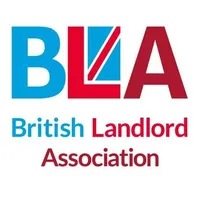GUIDE TO CARBON MONOXIDE (CO)
Unsafe gas appliances can produce a highly poisonous gas called carbon monoxide (CO). It can cause death and serious long-term health problems such as brain damage.
CO is produced by the incomplete burning of natural gas or liquefied petroleum gas (LPG). This happens when a gas appliance has been incorrectly fitted, badly repaired or poorly maintained. It can also occur if flues, chimneys or vents are blocked.
Oil and solid fuels such as coal, wood, petrol and oil can also produce carbon monoxide.
CO poisoning occurs when you breathe in the gas, and it replaces oxygen in your bloodstream. Without oxygen, your body tissue and cells die. Even small amounts of the gas can cause CO poisoning, and long-term effects can include paralysis and brain damage.
Symptoms to look out for include:
- Headaches
- Breathlessness
- Nausea
- Dizziness
- Collapse
- Loss of consciousness
- Tiredness
- Drowsiness
- Vomiting
- Pains in the chest
- Stomach pains
- Erratic behaviour
- Visual problems
What causes carbon monoxide to leak?
Carbon monoxide is produced when fuels such as gas, oil, coal and wood don’t burn fully.
Burning charcoal, running cars and cigarette smoke also produce carbon monoxide gas.
Gas, oil, coal and wood are sources of fuel used in many household appliances, including:
- Boilers
- Gas fires
- Central heating systems
- Water heaters
- Cookers
- Open fires
Incorrectly installed, poorly maintained or poorly ventilated household appliances – such as cookers, heaters and central heating boilers – are the most common causes of accidental exposure to carbon monoxide.
The risk of exposure to carbon monoxide from portable devices may also be higher in caravans, boats and mobile homes.
Other possible causes of carbon monoxide poisoning include:
- blocked flues and chimneys – this can stop carbon monoxide from escaping, allowing it to reach dangerous levels
- burning fuel in an enclosed or unventilated space – for example, running a car engine, petrol-powered generator or barbecue inside a garage, or a faulty boiler in an enclosed kitchen
- faulty or blocked car exhausts – a leak or blockage in the exhaust pipe, such as after heavy snowfall, could lead to a build-up of carbon monoxide
- paint fumes – some cleaning fluids and paint removers contain methylene chloride (dichloromethane), which can cause carbon monoxide poisoning if breathed in
- smoking shisha pipes indoors – shisha pipes burn charcoal and tobacco, which can lead to a build-up of carbon monoxide in enclosed or unventilated rooms
Understanding the Capital Gains Tax Rate
How To Find Land For Sale Online
Best Landlords Association to join in 2022?
Landlord Electrical Safety inspection report (EICR) 2022 Guide
